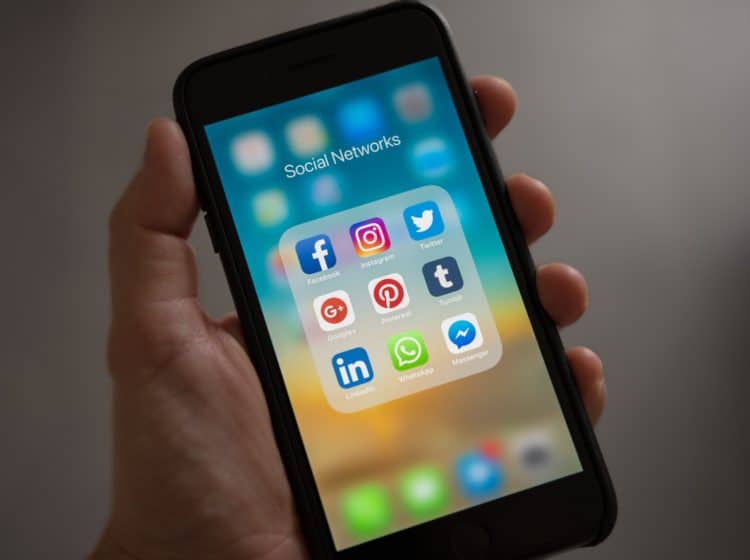let me show you why marketing is so much more interesting than you think…

Empathy and its role in Marketing
One of 2 of my favorite sessions at the Seattle Interactive Conference held in Seattle, October 2019, was on the significance of Empathy in Marketing. The instructor describes “Empathy” as being the exact intersecting middle-point of three things; 1) Taking into account your groups perspective 2) Withholding judgement 3) Consider the context. Empathy is described as that ‘thing’ that intersects all three of these points. Pretty genius description, right? I most certainly thought so. If you think about it, the more you understand this principle in human behavior and marketing, the more successful you would be in marketing to your customers. She talked more on the case study of how the commonly used travel luggage with wheels came to be. Apparently back in the 70’s, everyone carried around with them these huge, heavy, and awkward travel luggage that was very cumbersome to carry around with you at the airport. Bernard Sadow invented the first luggage with wheels on it. Putting wheels on luggage made traveling much easier. From taking your bag out of your car, wheeling it to your ticket counter to check in, it sure made life much easier to deal with. Mr. Sadow must’ve gotten very wealthy for this invention! He studied and immersed himself in the perspective of his customers, and then thought of a way to address the pain points of those customers. Corrie went on to suggest that you must “Expose yourself to the world of the people who use your product. We can’t develop empathy for data sets, we can only develop empathy for individuals.” It was clearly invested and thoughtful empathy that Mr. Sadow was able to identify what the pain point was, and then to design a product around the empathy that resulted from that research.
It is human nature for people to gravitate towards those they perceive as leaders. Big brands of the world have done a great job of 1) getting the people to know them 2) getting people to like them 3) getting people to trust them. After all, it is by brand recognition that people associate the products or services that are provided by these brands as trusted leaders in the niche of their needs and wants, aligning what the customer has an appetite for, and what the Brand can sufficiently satisfy that appetite.
Brands are leaders. Some brands are better leaders than others, naturally. They tout their products or services as the best when compared to other brands products or services. If the brand can perfectly empathize with their customers, the better they can relate their products and services to market and sell. And so, empathy is key to a successful marketing campaign. Be sure to invest enough time and energy towards getting a better empathetic understanding so that you can better align your customers pain points with your own unique design to satisfy their unique situation or circumstance.
Let’s get a little scientific
A.J. Peper Ph.D is my current manager at work. I asked him on one random occasion to teach me something. He stated he learned something from another Ph.D on the subject of learning. He passed on to me that any person can learn anything with just 3 things. 1) Active processing 2) Active Recall 3) Temporal Distribution. Look it up. Apply these principles in your marketing when trying to get your audience to get to 1) know you 2) like you 3) trust you. See where I’m going with this?
Let’s get artsy-fartsy
I’ve asked my CEO, Randy Harrington Ph.D, for his definition of art. (Prepare your mind to be blown.) “As far as art, I like to borrow a turn of phrase from a literary critic named Kenneth Burke. He was Harry Chapin’s grandfather…but more notably a brilliant critical philosopher. In Burke’s phrase the first word is “form.” I like the word “Art.” Art is the simultaneous creation and fulfillment of appetite. I think this is what happens with music, literature, sculpture, theatre, and any visual art. I might add “continuously” as well to the definition as some things bring the same experience of revelation in every experience—even if you have seen Michelangelo’s David a thousand times—it never fails to create that flash of “Wow.” Art is a kind of aesthetic alchemy; pulling together bits and pieces in new and catalytic ways. Most modern music (for example) is rooted in very limited scales and chord progressions, but something can sound completely new even though it is made from the same ingredients as a million songs before it. This craft is the essence of creativity—discovering what is new in the familiar materials that surround you.” – Randy Harrington Ph.D. November 04, 2019 12:34pm.
1) Get them to know you
Think top funnel ‘awareness’ in the AIDA model. If you can place yourself or your brand at the top of the funnel in your customers journey, you are at the start of the purchase path. Get the customers to know you. You do this with Social Media, smart and thoughtful ESP management, commercials in Google’s display network, or word of mouth. But get your customer to know who you are.
2) Get them to like you
Now that you’ve gotten your customer to know you, you’ve got to make the most of the momentum to drag them down the funnel. Think the ‘interest’ phase of the AIDA model. If you can get your products or services to more align with their needs, you’ve got them to dive deeper in the funnel and are now have them interested in your products or services. Keep going!
3) Get them to trust you
This is probably the most important phase of the purchase funnel, prior to the action or last phase of the funnel. If you can get them to trust you, you’ve got the customer to be emotionally invested in your paradigm of the marketing process. Once the customer has committed to trusting you, it is generally smooth sailing to get them to purchase and complete the funnel to the end of their journey. Congrats!








